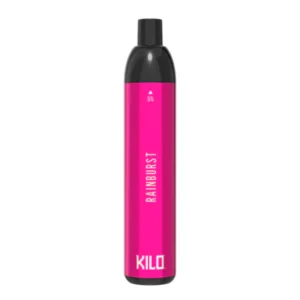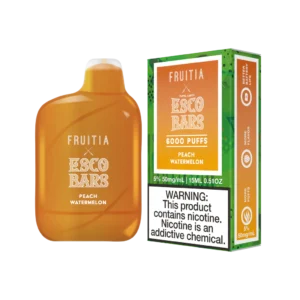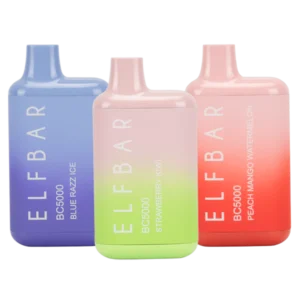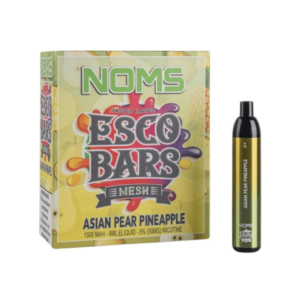
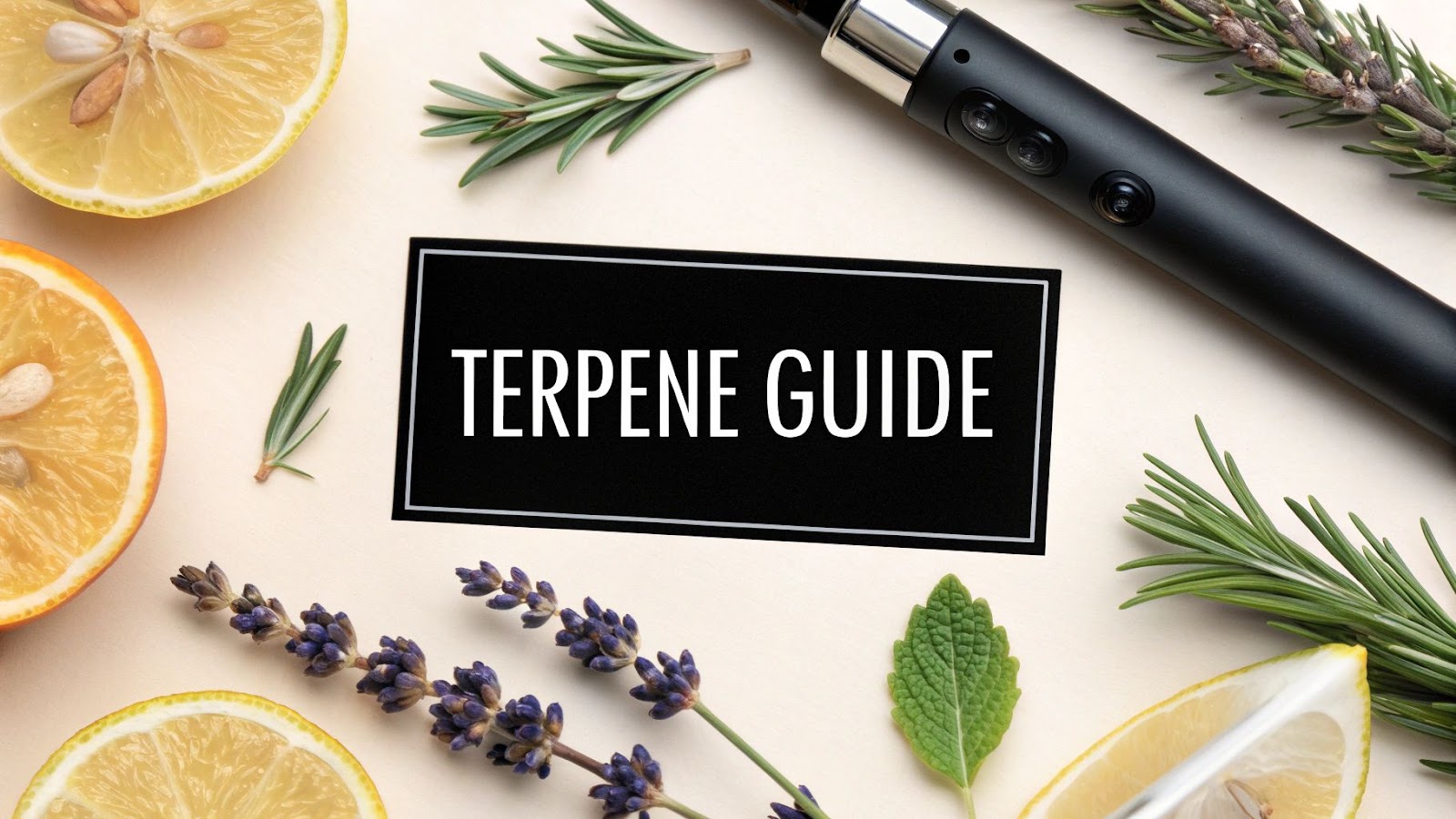
What Does Terp Mean? A Guide to Terpenes in Vaping
Ever heard someone in a vape shop talk about the ‘terps’ in their e-liquid and wondered what they meant? It’s not some secret code. ‘Terp’ is simply slang for terpene.
So, what’s a terpene? Think of them as the natural “essential oils” of the plant kingdom. They’re the tiny, aromatic molecules that give a lemon its sharp, zesty punch, lavender its signature calming fragrance, and a pine tree its fresh, earthy aroma.
The Aromatic World of Terpenes

If you’ve ever noticed that different CBD oils or vape liquids have wildly different flavors, smells, and even effects, you can thank terpenes. They’re the masterminds behind a product’s unique personality, shaping everything from its taste to the way it makes you feel.
But they do more than just smell and taste good. In nature, terpenes are a plant’s survival toolkit. They’re used to:
- Lure in helpful pollinators like bees.
- Repel hungry pests and other predators.
- Defend against bacteria, fungi, and other environmental threats.
This isn’t some small family of compounds, either. The world of terpenes is massive, with over 20,000 different types found in nature. The cannabis plant alone has more than 150 identified terpenes, and each one helps create a strain’s unique profile. If you want to dive deeper into the science, the team at Blue River has some great info on these fascinating compounds.
Getting a handle on what a ‘terp’ is really opens up a new way of looking at your favorite products. It’s the difference between just picking a flavor and consciously choosing a specific experience based on its unique blend of these amazing molecules.
So, What Do Terpenes Really Do?
Sure, the first thing you’ll notice about terpenes is their incredible aroma and taste. But that’s just scratching the surface. Think of them as a plant’s multi-tool for survival out in the wild. These fragrant compounds act like a sophisticated communication system, sending out signals that attract friendly pollinators while warding off pests and predators that might fancy a snack.
This clever survival mechanism is exactly what makes terpenes so valuable in the world of CBD and vapes. They’re created in the very same place as cannabinoids like CBD and THC: the tiny, glistening glands on the cannabis plant known as trichomes. It’s in these little crystal-like factories that the magic really starts to happen.
Ever Heard of the Entourage Effect?
This is where things get really interesting. You can’t talk about terpenes without mentioning the “entourage effect.” It’s the popular theory that all these different plant compounds—cannabinoids and terpenes included—work better together than they do alone. They synergize, enhancing and balancing each other’s effects.
Let’s put it this way: think of a band. CBD might be the lead vocalist, but the terpenes are the rest of the crew. A terpene like Myrcene could be the deep, mellow bassline that gives the whole song a relaxed vibe. On the other hand, a zesty terpene like Limonene is like the sharp, energetic lead guitar, making you feel uplifted and ready to go.
The terpenes aren’t just background music. They completely shape the performance, creating a richer and more complex experience than the lead singer could ever deliver solo. They’re critical to the final harmony.
This teamwork is precisely why a little terpene knowledge can completely change how you shop for products. In nature, the terpenes produced in the plant’s trichomes help it thrive by creating a perfect balance between attracting allies and repelling threats. For a deeper dive into how plants produce these amazing compounds, check out this guide on botanically-derived terpenes from Lab Effects. It’s that same natural synergy that people seek out in a top-shelf vape or CBD oil.
Meet the Most Common Terpenes
So, we’ve talked about the entourage effect, but who are the actual players on the team? Let’s get to know the aromatic heavy hitters you’ll run into most often in CBD and vape products.
Think of it like this: if cannabinoids are the lead singers, terpenes are the rest of the band, each with its own instrument and style, creating the final sound. This is where you can start to really customize your experience.
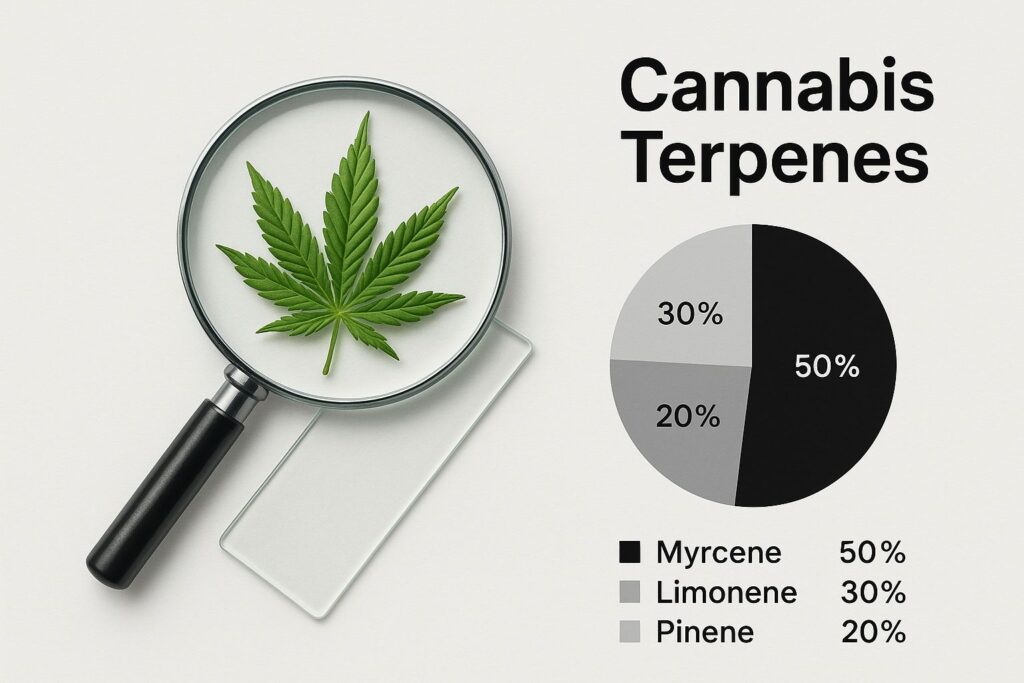
Myrcene: The Calming Force
Ever notice that earthy, almost musky scent in mangoes or the spicy note in a good beer? You’re smelling Myrcene. As the most common terpene found in cannabis, it’s the foundation for many strains.
People often reach for Myrcene-heavy products when they want to kick back and melt into the couch. It’s known for promoting a feeling of deep relaxation. Think of it as the ‘chill-out’ terp.
Limonene: The Bright Burst of Sunshine
You know that zesty, invigorating smell when you peel an orange? That’s Limonene, and it does exactly what you’d expect. This terpene is all about bright, sunny, and uplifting energy.
It’s found in the rinds of just about every citrus fruit and is the go-to for anyone looking for a mood-booster. If you want to add a little cheer and energy to your session, look for that sharp, sweet citrus scent.
Learning to pick out these key players is a game-changer. You’re no longer just picking a flavor; you’re actively curating the entire vibe of your experience.
Linalool: The Soothing Floral Touch
Walk through a lavender field in your mind. That famously calming floral aroma? That’s Linalool. It’s the scent behind lavender’s long-standing reputation for relaxation and stress relief.
Unlike the heavy sedation some associate with Myrcene, Linalool offers a more gentle, soothing calm. It’s perfect for when you need to quiet the mental noise and just find your center.
Pinene: The Breath of Fresh Air
Just like the name says, Pinene smells like a walk through a pine forest—crisp, clean, and refreshing. It’s one of the most widespread terpenes in the entire plant kingdom, showing up in everything from pine needles to rosemary and basil.
Many users find that Pinene brings a sense of alertness and focus. It’s often described as a clarifying terpene that helps cut through brain fog, making it great for when you need to stay sharp.
Picking the right profile is half the battle; using your gear correctly is the other. For some great tips on getting the most out of every puff, check out our guide on how to vape safely.
A Quick Guide to Common Terpene Profiles
To make things even easier, here’s a quick-reference chart. Think of it as your cheat sheet for matching a scent to its likely effect.
| Terpene | Signature Aroma | Commonly Associated Effects |
| Myrcene | Earthy, musky, clove-like, fruity | Relaxing, calming |
| Limonene | Bright, zesty, sweet citrus | Uplifting, mood-elevating, energizing |
| Linalool | Floral, sweet, slightly spicy | Soothing, stress-relieving |
| Pinene | Fresh pine, earthy, sharp | Alert, focused, clarifying |
Keep this table in mind next time you’re browsing. A quick sniff or a look at the product’s lab report can tell you a lot about the experience waiting inside.
How Terpenes Shape Your Vaping Experience
This is where the magic really happens. When you pick out a vape liquid or a CBD cart, you’re doing more than just choosing a flavor. You’re actually selecting a complete sensory experience, all thanks to these amazing aromatic compounds. Figuring out what “terp” means for your vape is the secret to finding a session that’s perfectly suited to you.
Vape manufacturers add specific terpene blends to their products for a couple of key reasons. Sometimes, the goal is to perfectly mimic the scent and feel of a well-known cannabis strain. Other times, they get creative and build entirely new sensory profiles from the ground up. This innovation is how a simple puff becomes a rich, flavorful event.
Cannabis-Derived vs. Botanical Terpenes
Where these terpenes come from really matters. For the most part, they’re sourced from two main places:
- Cannabis-Derived Terpenes: These are pulled directly from the cannabis plant itself. They give you the truest, most authentic profile of a specific strain, capturing all the subtle complexities that make it unique.
- Botanical Terpenes: Sourced from other plants—think citrus peels, pine needles, or lavender flowers—these terpenes are identical on a molecular level to the ones found in cannabis. They’re often easier to source in large quantities, which allows for more consistent and scalable flavor creation.
Both can make for an incredible product. It really just boils down to what you prefer: the intricate, authentic character of cannabis-derived terps or the crisp, reliable notes from botanical blends.
The real artistry is in the concentration. A typical cannabis flower naturally has a terpene content of around 2–5%. In contrast, some vape oils have been packed with concentrations as high as 20%. This has even pushed some in the industry to look into terpene-infused drinks to meet demand while exploring safety. You can read more about these innovative approaches to terpene use on cen.acs.org.
At the end of the day, the source and concentration of the terpenes are what define your experience. They give you the power to find exactly what you’re looking for, whether it’s the comforting vibe of an old favorite or a brand-new flavor adventure. Nailing that perfect blend also depends on the quality of your product and the kind of hardware you’re using. For a deeper dive, check out our guide on exploring different types of vaping devices.
How to Choose Products Based on Terpenes
Now that you know what a “terp” is, you can start putting that knowledge to work and create a truly customized experience. Picking products based on their terpene profile is all about becoming the curator of your own sessions. It’s a shift from just chasing flavors to intentionally choosing the specific moods and feelings you’re after.
The real trick is learning to read the packaging. A lot of brands now proudly display the dominant terpenes in their products right on the label, which gives you your first clue. But if you want to get a much clearer picture, you’ll want to track down the product’s Certificate of Analysis (COA), which is just a fancy name for a detailed lab report.

Decoding Product Labels and Lab Reports
Think of a COA as the product’s full nutritional facts panel. It breaks down the exact concentration of cannabinoids and, crucially for our purposes, gives you a complete terpene analysis. This lets you move from just guessing to truly knowing what you’re getting.
Here’s a simple way to start using that information:
- For Relaxation: Looking to kick back and unwind after a stressful day? Scan the COA for products high in Myrcene or Linalool. Their signature earthy and floral notes are a good sign you’re in for a calming session.
- For an Uplifting Boost: Need a bit more pep in your step or a brighter mood? Keep an eye out for products rich in Limonene. That vibrant, citrus-heavy profile is your go-to for a more energetic and cheerful feeling.
The best tool you have is your own nose. Seriously. Your senses are incredibly good at steering you toward the profiles that your body will respond to best. Don’t be afraid to trust your own preferences—if it smells amazing to you, you’re probably on the right track.
Experimenting is where the real fun begins. Try small amounts of different profiles and pay attention to how they make you feel. Before you know it, you’ll start to recognize your favorite terpenes, making it a breeze to find the perfect vape every single time. For more tips, you can learn how to enhance your vaping experience with terpenes by matching them to your daily routine.
Start Your Journey into the World of Terpenes
So, you see? ‘Terp’ isn’t just some trendy slang. It’s your ticket to a whole new world of flavor, aroma, and personalized effects.
Now that you understand what terpenes are, you can move past a one-size-fits-all experience. You’re equipped to find products that actually match the specific scents and moods you’re after, making every session something special.
Ready to dive in and explore this aromatic landscape for yourself? Come on down to one of our stores and chat with the team. We love talking terps and can walk you through some amazing profiles to help you find that perfect product. If you’re just starting out, our CBD Vaping 101 guide is another great place to begin.
A Few Common Questions About Terps
Even after getting the basics down, you probably still have a few questions about terpenes. Let’s clear up some of the most common ones so you can feel totally confident as you explore.
Is it Safe to Vape Terpenes?
Since terpenes come from plants, we’re around them all the time. In high-quality vape products, the terpene concentrations are generally considered safe to inhale. The key word here is quality.
Stick with brands that are transparent and provide third-party lab results. This is your proof that what you’re getting is pure and doesn’t have ridiculously high concentrations. When in doubt, it’s always smart to consult a healthcare professional. If you want to dive deeper, it’s a good idea to sort through the common CBD vaping myths versus facts.
Will Terpenes Get You High?
Nope, not a chance. Terpenes are completely non-intoxicating, so they won’t produce a “high” like THC.
Think of them more as mood-setters. They work behind the scenes as part of the “entourage effect,” helping to steer your experience toward feeling more relaxed or more energized. They influence the vibe, but they don’t cause the high.
What's the Big Deal with Live Resin?
Live resin is so popular for one simple reason: it captures the absolute truest flavor and aroma of the plant.
How? The process is pretty cool. Instead of drying the plant first, it’s flash-frozen right after being harvested. This technique perfectly preserves all those delicate terpenes that usually get lost in the drying process. The end result is a vape or concentrate that tastes and smells just like the living plant—it’s a much richer and more authentic experience.
Ready to find a terpene profile that’s right for you? Swing by one of our Smoke Tokes CBD and Vape Shops in San Antonio, Schertz, or Austin. Our team is always happy to walk you through the options and help you discover something you’ll love. Find your nearest location at https://smoketokescbd.com.
Nicotine is an addictive chemical. Content intended for adults 21+.



